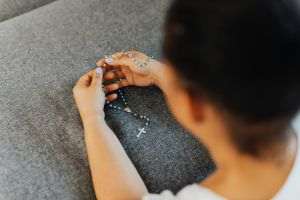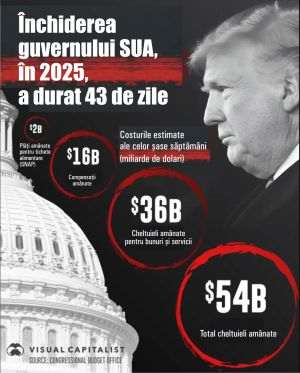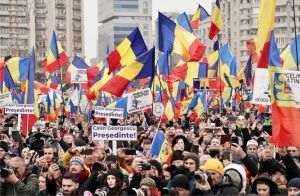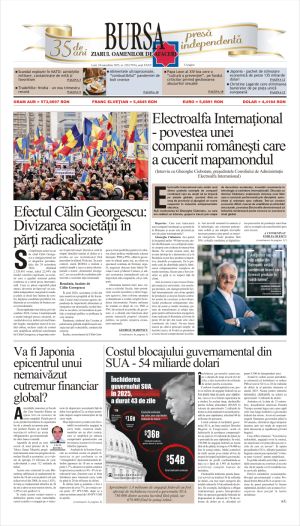Located at the crossroads between Europe and Africa, Morocco has been a meeting point for Arab, African, Berber and European cultures for centuries. Mosques with imposing minarets, labyrinthine cities where you sometimes have the feeling that you are going back in time for centuries, archaeological remains and buildings with modern architecture, fountains, gardens with palm trees and markets where Moroccans with tubas soak you with tea or spices, long beaches and a combination of tastes, aromas and colors stimulate your senses.
Hicham, the guide who accompanied us on Christian Tour's week-long info trip through the main cities of Morocco, says that the country attracts millions of tourists from all over the world every year.
"Morocco is a country with a rich history, the Moroccan state being created in the 8th century. We have more than twelve centuries of history, in which different cultures have merged. The Berbers were the first inhabitants of the territory that is now Morocco. Then came the Arabs who brought Islam. Over time the cultures merged, and today we are all Moroccans, united under one king," says Hicham. "We have millions of tourists annually, Morocco being a safe country".
• Between the Mediterranean and Atlantic coasts

Located in the Maghreb region of North Africa, Morocco has plenty of tourist attractions, the guide says, adding that most tourists are French. "They are the imperial cities, the ones that were the capitals of the kingdom. Now the capital is Rabat, but before that it was Fes, Marrakesh and Meknes.
Casablanca is the largest city and economic center of Morocco. The main tourist attraction is the Hassan II Mosque, the largest in Africa and one of the largest in the world. Rabat, which is older than Casablanca, is a clean city, very nice to visit and our administrative capital. But Marrakech is the pearl - a tourist attraction known all over the world as well as the place where major international economic events are organized, in which the World Bank and the International Monetary Forum participate," Hicham told us.
Being located between the Mediterranean and Atlantic coasts, Morocco is also famous for its beaches, the guide says. "There are thousands of kilometers of beaches, bays and resorts where you can find all-inclusive tourist complexes. From Saidia on the border with Algeria to Tangier from where, from the Cape Spartel promontory, we see how the Mediterranean enters the Atlantic", states Hicham. "If we cross the Atlas we have the city of Quarzazate - the gate of the desert, which after crossing we enter among the sand mountains".
Last but not least the cuisine, which is one of the best in the world, adds the Moroccan. "We have Tajin, which can be made with chicken, lamb, fish or just vegetables, but our national dish, known all over the world, is couscous. When you say Marcoc you think of couscous".
• The White City

Casablanca, the largest city in Morocco and the entire Maghreb, is often associated with the famous film with Humphrey Bogart and Ingrid Bergman from 1942. The name Casablanca, meaning White House in Spanish, comes from the name given to it by sailors Portuguese (Casa Branca), who used a white house as a landmark to locate the settlement from the sea - today, the name is reflected in the image of the city, with most of the buildings being white.
Located on the Atlantic coast and with almost four million inhabitants, according to Statista, Casablanca is the heart of Morocco's economic activity, with the country's largest companies as well as large international corporations based here. So, the White City as it is also called, is somewhat cosmopolitan, the new part - Ville Nouvelle - being furrowed by wide boulevards lined with massive buildings, with fountains, restaurants, shops and a continuous bustle.
The Hasan II Mosque is the most important tourist attraction in Casablanca, being truly impressive. Sitting on the oceanfront and with a square in front that enhances its perspective, the mosque is the largest in Africa, has the second tallest minaret in the world, at 210 meters, and can accommodate around 25,000 worshippers.
The building abounds in carved stone and wood surfaces, mosaics, marble, and the roof is retractable. A guide accompanies you during the tour of the mosque, who tells you so much that at the end you don't really have anything left to ask. Mohammed V Square with its colonial architecture, United Nations Square with its dose of modernism, Al-Jadid - the former Portuguese enclave and, of course, Ricks Cafe, designed to recreate the famous cafe from the film Casablanca are objectives that should not be missed in The White City.
• The modern city

Rabat, the capital of Morocco since the country gained independence in 1955, has the air of a modern city. The circuit organized by Christian Tour includes visiting the Hassan Tower, the Mausoleum of Mohammed V and the Kasbah Oudaya district with narrow, brightly colored streets and Andalusian gardens.
Hassan's tower is the minaret of an unfinished mosque in the 12th century, which was supposed to be the tallest in the world. It is surrounded by hundreds of columns and walls of the unfinished mosque, and its height of 44 meters and ochre-brown color against the background of the blue sky form an impressive perspective. The mausoleum of King Mohammed V, who played a key role in Mororc's independence, is located directly across from Hassan's Tower, housing his tomb. From the architectural ensemble formed by the two monuments, you can see a building that reminds you of a snake's head and a skyscraper.
"It is the Great Theater in Rabat, designed by the famous architect Zaha Hadid. It is her only building in Africa, but unfortunately she never got to see it completed," says the guide on the spot. "The other is the Tower of Mohammed VI, the second tallest building in Africa," he adds of the complex that looks like a rocket ready for takeoff.
• The labyrinth city

The next city visited was Fes, the oldest of Morocco's four imperial cities, which Moroccans claim is the spiritual and religious center of the country. Meryem Lmallouki, our guide from Fes, told us: "Fes was the capital of Morocco, but in the 20th century the French colonizers moved the capital to Rabat. Even though it is no longer the administrative capital, Fes is the cultural capital of the country. Here is the oldest university in the world, founded in 859 by Fatima al-Fihri. There are also mosques, palaces or schools called madrasas".
The guide added: "Fes is the labyrinth city. It has two large areas (n.n. Medina - the historic city and Ville Nouvelle). In the medina there are many small quarters, each with five elements - the mosque, the bakery, the fountain, the school and the public baths - called the hammam. Locals, who know the labyrinthine streets well, can do the entire tour of the medina in about four hours. But those who are not from the medina are lost. Each neighborhood has a specific. One specializes in tanning, another in bronze or copper products, another in sweets, food and so on. You can see how they are made, taste or buy".
The route through the medina of Fes el-Bali, which is a UNESCO monument and the best preserved medina in the Arab world, is a journey of several hours into the Middle Ages. It's a veritable maze of over 9,000 winding, narrow canyon-like streets that truly transport you back in time. Today, the medina is largely dependent on the tourist trade, and you can buy almost anything here, including the famous argan oil, at negotiable prices.
• The city of gates

Meknes, a city considered by UNESCO as a Cultural Heritage of Humanity, is famous for its imposing gates, it is a combination of old and new, with markets (called souks), mosques, gardens and madrassas, divided according to the same pattern found in Moroccan cities - the medina and Ville Novelle.
The mausoleum of Sultan Moulay Ismail, the founder of the city and considered the bloodiest of Moroccan rulers, or the Bab el-Khemis and Bab el-Mansour gates should not be missed. On the road between Fes and Meknes we visited the Roman ruins of Volubilis from the 1st century, with the triumphal arch of Karakali, the house of Orpheus, a basilica, baths, a forum and patrician houses with well-preserved mosaics.
• Between the medina and the sea

Essaouira has all the attractions that a tourist in Morocco who is not looking for large urban agglomerations would want. A port on the Atlantic, the city attracts with its beaches washed by the ocean flow, on which Moroccans in turbans lead bridle dromedaries, massive old fortifications with narrow and labyrinthine streets that combine elements of Portuguese, French and Berber architecture, white houses with blue doors and restaurants its. It seems like the ideal place to relax.
As in most Moroccan cities, merchants are everywhere and prices are negotiable, but they seem to be less pushy than in Marrakech or Fes.
• The Red City

Moroccans say that Marrakech is the most beautiful city in the country. Also known as the Red City, due to the color of its ocher-red buildings, Marrakech is a vibrant city, one of the main cultural, religious and commercial centers of the Maghreb.
The old city is a UNESCO heritage site and the Jemaa el-Fnaa square is one of the most famous urban tourist attractions in Africa. Here, among sellers of spices, teas, food, scarves or caftans, you can find monkeys trained to do various tricks, including with tourists' goods and cobra tamers. Marrakech is also known for its palaces and gardens, oases of peace in the midst of the hustle and bustle of the city. The Bahia Palace, built at the end of the 19th century by the sultan's vizier for his own use, is composed of rooms decorated with stucco and mosaics in the Islamic and Moroccan architectural style, as well as gardens with palm trees and other exotic new plants.
The meal can be taken in one of the countless restaurants in the city, which are set up including in the inner courtyards of the famous riads, and the Moroccan food is really good and filling. You order something, usually beef or chicken dishes, and the waiter brings you two or three dishes, which go well with the mint tea, which is very popular in the North African country.
In addition to the specific elements, in Morocco there is something that we have long since disappeared. Children kicking the ball in the street. Some have shirts with Hakimi or Ziyech written on the back, you see them from morning until late at night near houses, on fields or beaches, shooting, juggling or passing with a joy that seems to no longer exist here. This is probably why, last year, Morocco was the first Arab and African country to reach the semi-finals of the World Cup. They are very proud of it.












































































